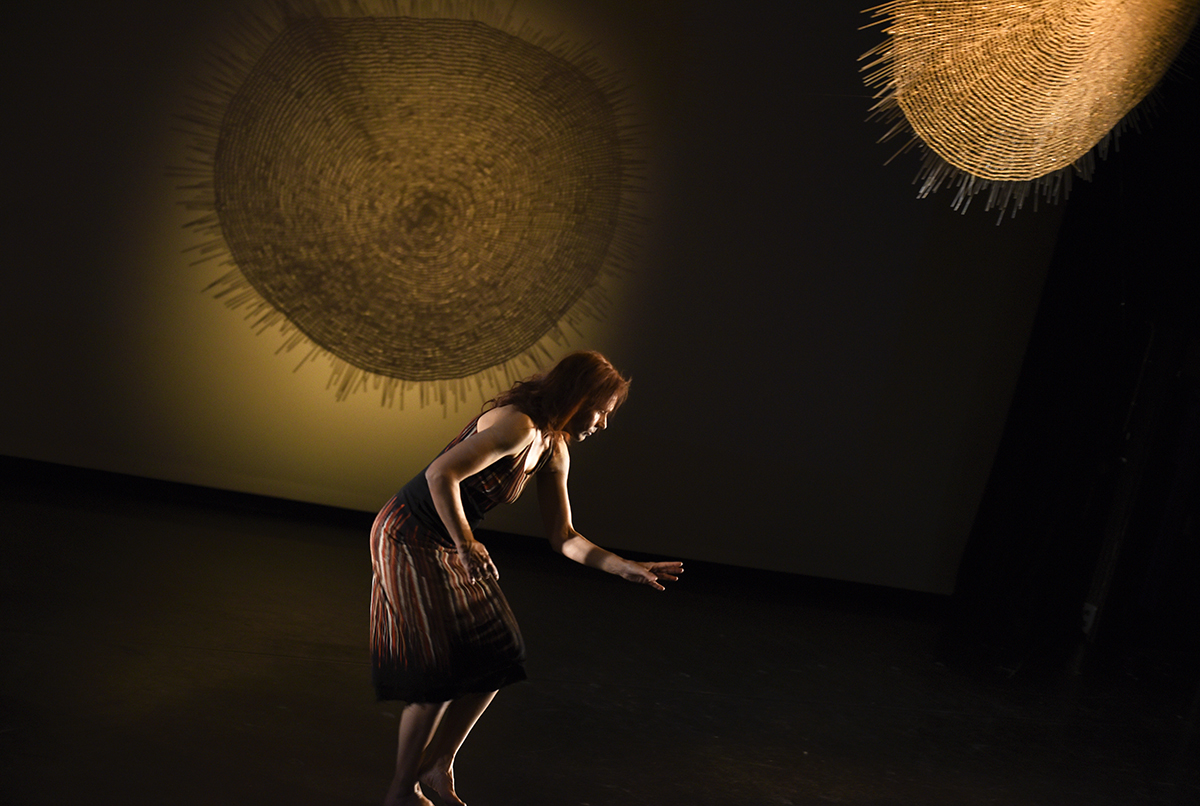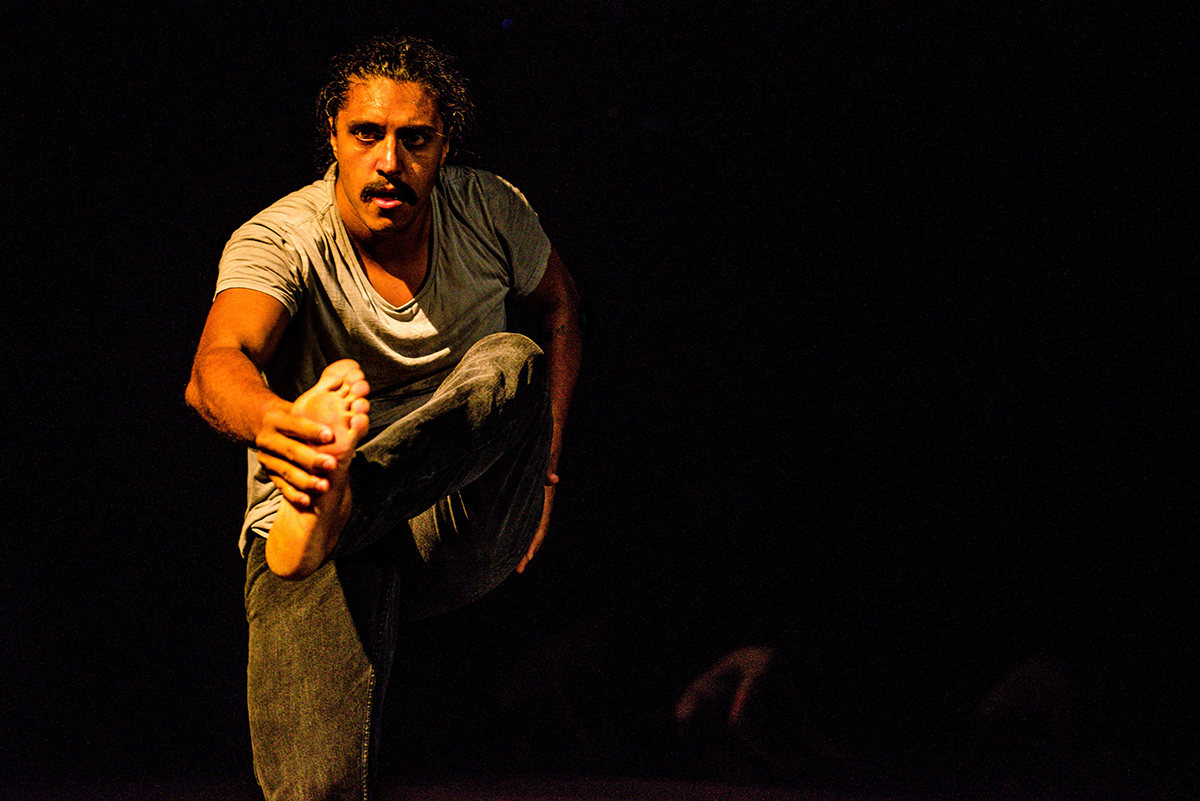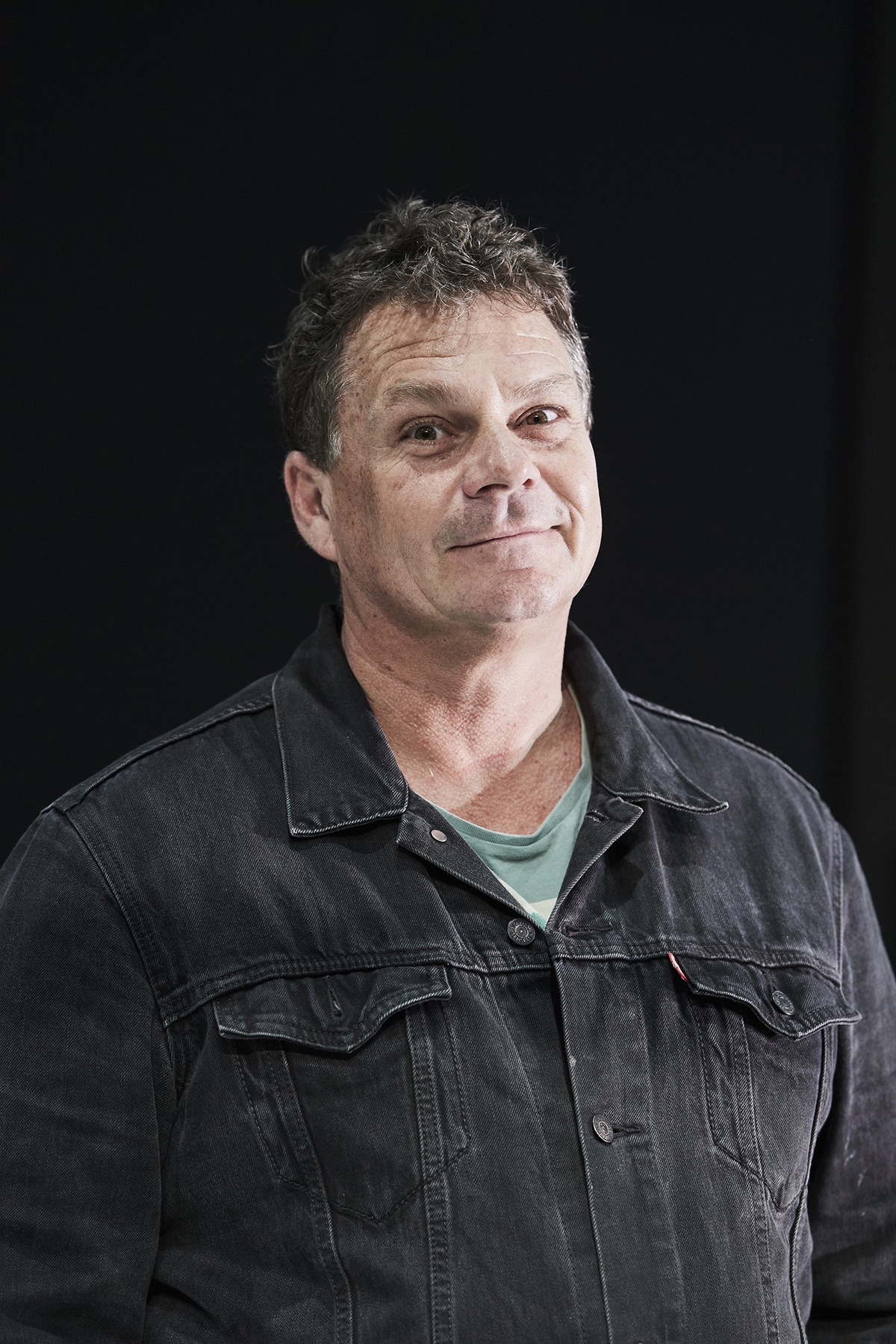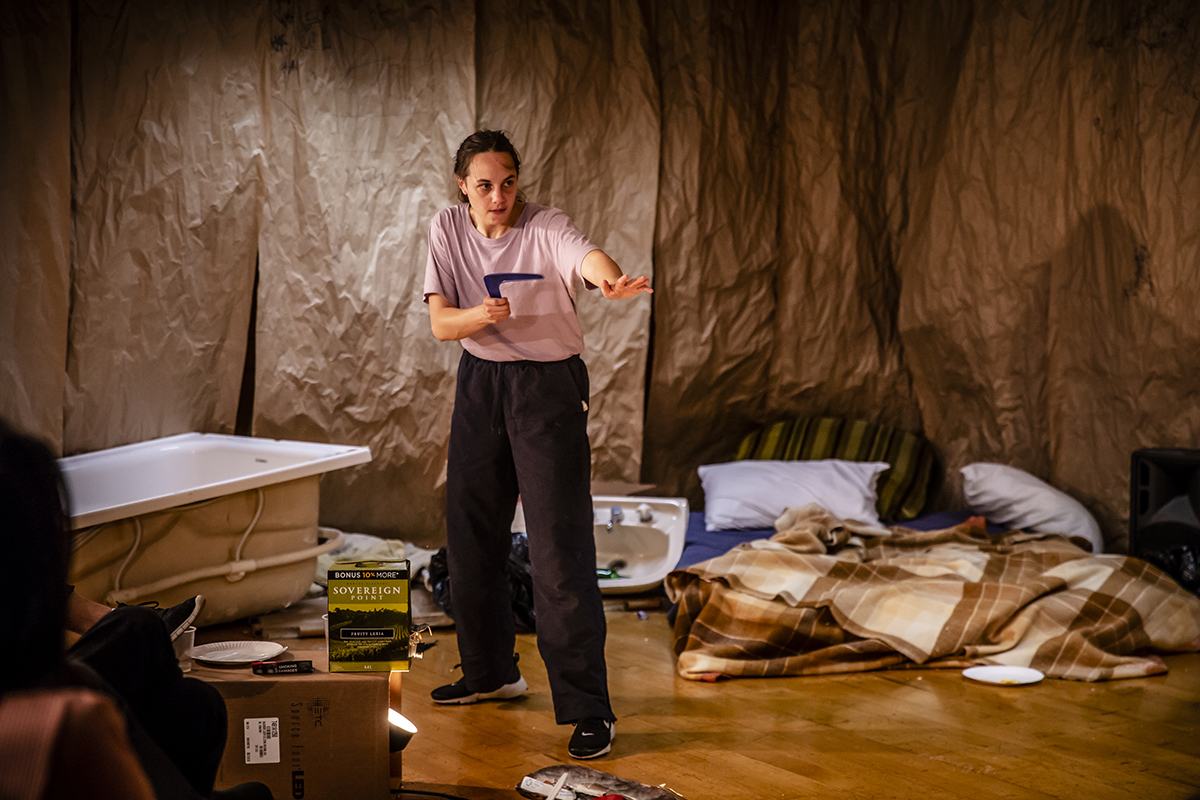
Black dance, BlakDance, companies & culture
In 2009, my interview for RealTime with Bangarra Dance Theatre Artistic Director Stephen Page ended thus, when he asked, “I don’t know why there are no sister dance companies for Bangarra across the country; why no Bangarra theatre, no Bangarra music? Why am I one of so few who are fortunate enough to be able to create in my own cave, with a stream of youngsters wanting to tell their own stories to me, now that I’m the elder?”
And those are still excellent questions today. For, with less than 3% of Australia Council funding going to Indigenous arts, Bangarra Dance Theatre is still the only dance company recipient of ongoing Major Organisation funding from the Australia Council. Somehow, eight other Indigenous dance companies exist on project grants and individual funding. But this is a situation which BlakDance — self-described as, “We’re a national organisation that provides managing and producing artist and presenter services and sector advocacy … prioritising independent artists and emerging small to medium companies” — is determined to change.
“We’re aiming for a deep dive into the future,” declares Merindah Donnelly, Executive Producer of the Brisbane-based BlakDance. “In the light of questions raised by the Australian Major Performing Arts Group (AMPAG) Review, we’re advocating the states and territories and the Federal Arts Minister consider funding any of the eight or more small to medium emerging Indigenous dance companies”.

Thomas E.S. Kelly, Misconceive, image by Simon Woods
Not being national dance companies — apart, arguably, from the dynamic Marrugeku, which is defined as intercultural rather than Indigenous — few are aware of these riches. There are many emerging groups, collectives and companies; the eight who have given permission to be mentioned are: NT Dance under Gary Lang, Karul Projects in Queensland led by Thomas ES Kelly, Ochre Dance in WA, Artistic Director Mark Howett, Queensland’s Pryce Centre For Culture and Arts, Executive Director Rita Pryce, Cairns’ Miriki Performing Arts Company, Wagana Aboriginal Dance Company in Sydney, and, both Brisbane-based, Digi Youth Arts and a new and emerging First Nations physical theatre collective currently under the stewardship of Casus Circus.

Mark Howett, photo courtesy the artist
Individual artists who’ve been involved in mentoring, training and choreographing for these companies include Vicki Van Hout, Joshua Pether, Katina Olsen, Ghenoa Gela, Amrita Hepi. Joel Bray, Mariaa Randall, Jacob Boehme and Carly Sheppard. Most are better known than the companies — and it’s an anomaly that someone like Van Hout — who’s been around the dance traps since performing with the Aboriginal Islander Dance Theatre (AIDT) in 1989 — hasn’t formed a permanent company.

Carly Sheppard in Crackers n Dip With Chase n Toey, image by Bryony Jackson
Could BlakDance, founded by Marilyn Miller in 2005, have facilitated that? It has led a five-year project which will see many of those individual dancers performing in New York in January during the 2019 First Nations Dialogue which will give the Big Apple more First Nations art than it’s ever seen. “It’s been 40 years in the making,” suggested Donnelley. “Uncle Bob Maza went there all those years and met with Spiderwoman Theatre — the Native American company named for a Hopi goddess.”
A key linkage here is Emily Johnson, a Yup’ik woman from Alaska who runs the longstanding Catalyst company offering “body-based work.” When Catalyst was programmed for festivals in Australia she learnt about our Indigenous scene. What emerges from the [Catalyst] website is that her collaborators are principally but not exclusively Indigenous, and her work is firmly based in her culture. Is this a model for Australia’s young Indigenous dancemakers?
What I gleaned from my conversation with Merindah Donnelly was the sense that the current, scrambling generation has clearly moved on from the models created by the Aboriginal and Islander Dance Theatre (AIDT, 1976-1998) and Bangarra whose leaders believed in the essence of traditional or classical Aboriginal and Torres Strait Islander cultures from the remote north as the root from which their work should grow. Stephen Page may have complained a decade ago about the effort required to conform to ancient protocols, but he shows no sign of throwing out that baby even today.
This week, Bangarra’s Dubboo at Carriageworks pays tribute to the personality of Page’s late brother David and to the 27 scores he wrote for the company, “licensed,” as Page said recently on the ABC, “by Djakapurra (Munyurryun) to fuse traditional and contemporary music.” Djakapurra’s earth-shaking Yolngu chants have grounded many a Bangarra score. And his dancing and choreography appeared as recently as 2016 in One’s Country, featuring Arnhem Land, TSI and urban responses to the land beneath the dancers’ feet. While historical works like Dark Emu, Bennelong, Patyegarang and Macq seem to have predominated of late, Bangarra hasn’t ignored the Indigenous present in Blak, Belong and the feature film Spear.
It’s a broad church that satisfies the AMPAG agenda and makes it easy for the federal government’s Department of Foreign Affairs and Trade (DFAT) to present Bangarra around the world as artistically exciting and a valid representation of Indigenous culture in Australia.
“But has Bangarra made it challenging for the small to medium First Nation dance sector and independents to come through,” asks Donnelley at BlakDance. “Because of racist stereotypes there can be an expectation that all our work needs to be recognisably Indigenous; and most are a mile away. Our independents are not offering large-scale mainstage productions, they’re experimental and multidisciplinary. A dance may contain the same values and process as a female ceremony. Is it more Indigenous than a potentially out-of-context cultural/traditional performance of dance?”
Who would know, I wonder? Tribal dance is so rarely seen in the cities of the south; though you could have found some at the Sydney Opera House’s recent Dance Rites, just over for this year. Donnelly continues: “I do think the younger generation have more freedom to work with whoever they want, however they want — thanks to the trailblazers”. And here she wants to make it clear: “I don’t want to come across as a Bangarra naysayer. As someone who trained in ballet I considered joining them and I love and respect Stephen. The size and scale of the Indigenous dance sector today is not unrelated to Bangarra showing young people themselves as dancers on stage and no one can underestimate the impact Bangarra has had on hundreds of thousands of audience members over time. The company is significant and should be upheld as such.”
But Donnelly has to argue that what might well be the largest Indigenous dance sector in the world is unfairly dominated by one company when it comes to funding, which determines the curatorial practices of presenters. And in terms of training, “We’ve got NAISDA Dance College (Gosford, NSW) and ACPA (Brisbane) — the two dedicated Indigenous training schools for performing artists — pumping out 30 graduates a year; where do they go? Bangarra might take two! Why train unemployable dancers?”
It’s contestable that there was ever an intention to have two complementary training schools for Indigenous artists. When Paul Keating brought down his Creative Nation cultural policy in 1994, he made it clear that he’d deserted the classical cultures of the north for urban Indigeneity and NAISDA was intended to move to Brisbane to match NIDA as a national centre for Indigenous performance training. Somehow NAISDA refused to bow. Its emotional hold on the industry was too great.
Fortunately, Bangarra has managed to contextualise tribal dance in its work in a way that doesn’t happen in the visual arts. There, an uncrossable divide exists between Western trained Aboriginal artists in the cities and the ‘untrained’ artists of the north who just have to make do on 40,000 years of visual mnemonics to tell their stories. Yet the politics of the situation insist they’re both ‘Aboriginal art.’
In my writing, I identify the urban work as Blak art, and therefore see sense in BlakDance’s separation argument. Of course, tribal dance and ceremony were defunded in the 90s, forcing Nugget Coombs’ Aboriginal Cultural Foundation to close down and the great inter-tribal dance festivals on Groote Eylandt were no more. Arguably, this was contributory to the troubles that incited the Intervention! But, coincidentally, both Stephen Page in his 2009 interview and BlakDance’s report of its 2017 National Indigenous Dance Forum seem to agree on a concept that wouldn’t be out-of-tune with the ACF’s raison d’etre, “The purpose of dance is not just about art — it’s also about culture as medicine.”
–
Jeremy Eccles is an arts journalist, theatre, opera and dance critic, writing for RealTime from 2000. In later life, he’s specialised in Indigenous arts and cultural commentary in art magazines, newspapers and online as editor of Aboriginal Art Directory.






